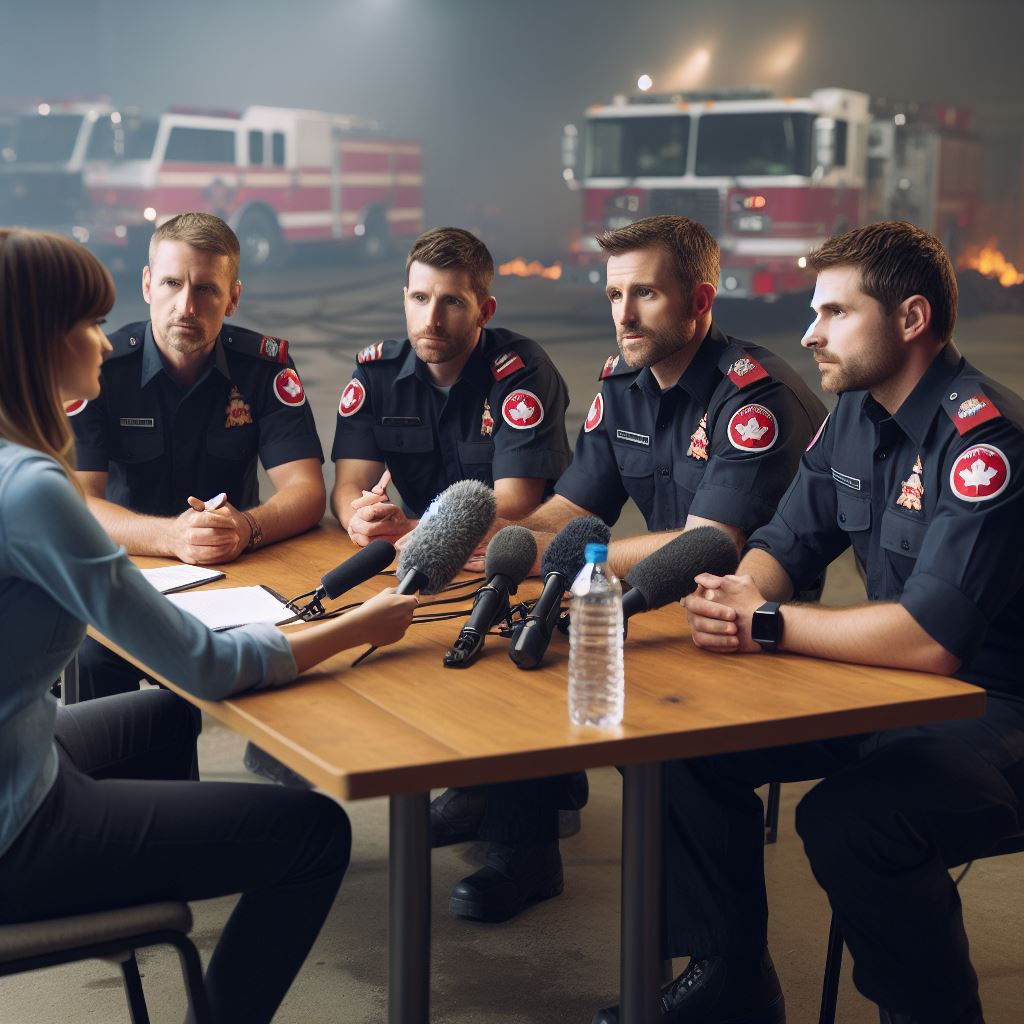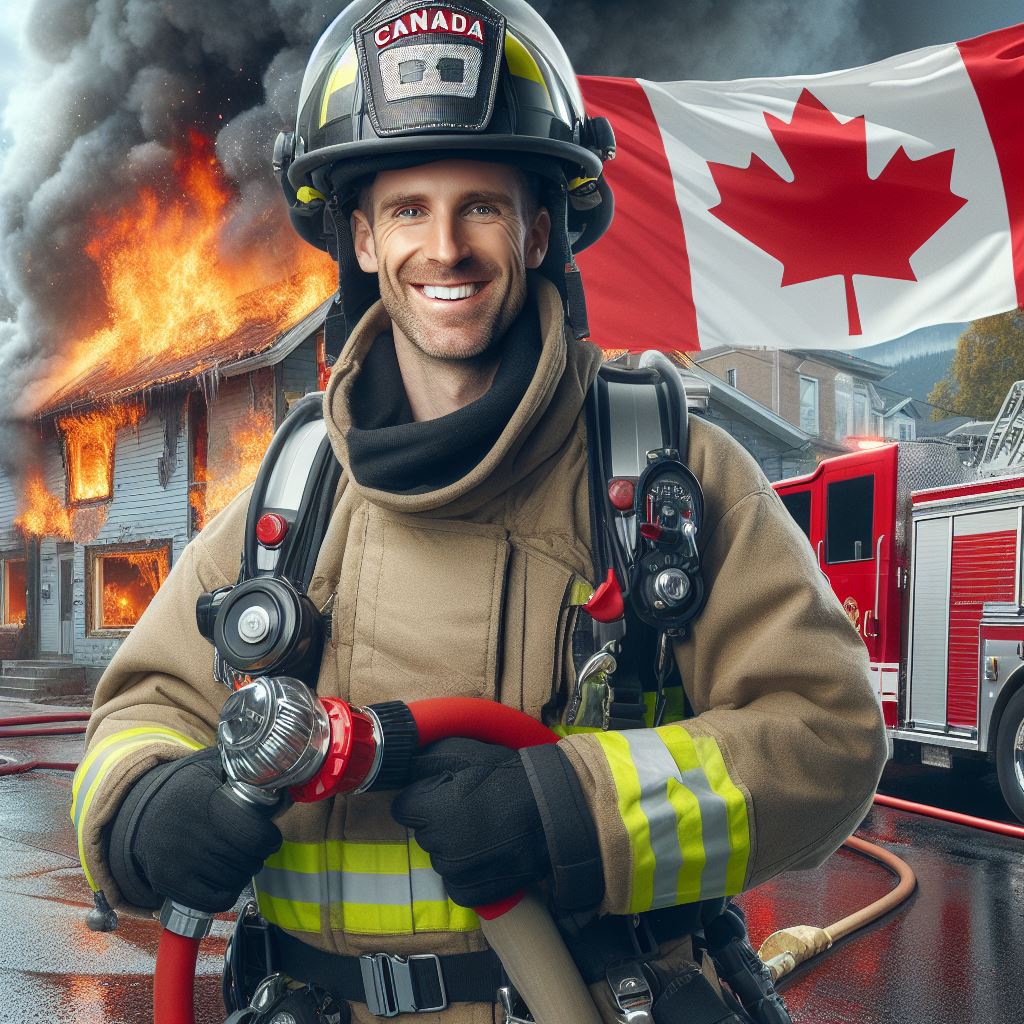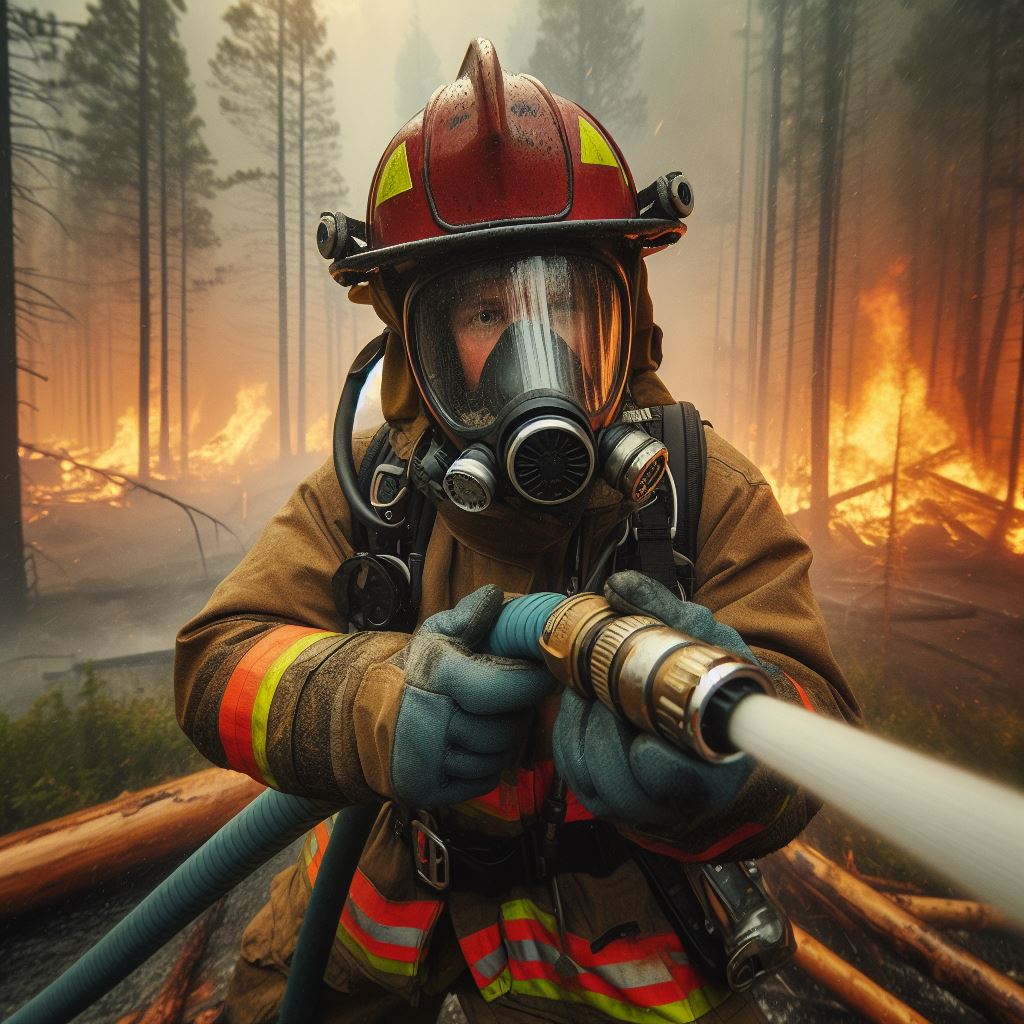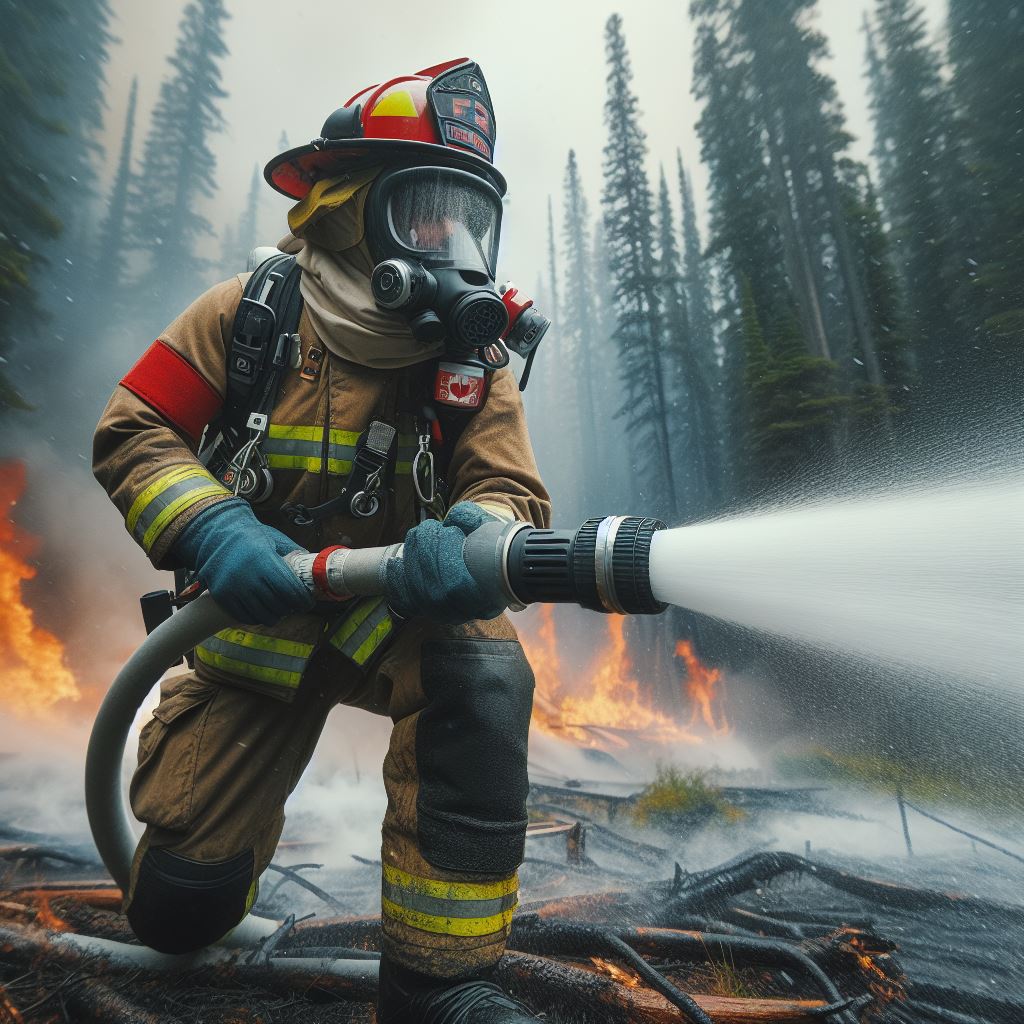Introduction
Fire chiefs hold significant responsibilities within Canadian communities. They are the frontline leaders in managing emergencies, ensuring public safety, and protecting properties.
Their role goes beyond fighting fires; they coordinate various emergency services, devise safety plans, and enforce building codes.
As communities grow and evolve, fire chiefs adapt their strategies and expand their skill sets to meet changing needs.
To gain deeper insights into the experiences and challenges faced by Canadian fire chiefs, we conducted interviews with professionals from different regions.
These interviews provide valuable perspectives on the evolving role of fire chiefs in diverse communities.
By sharing their insights, we hope to foster understanding and appreciation for the vital work undertaken by these individuals.
Throughout this blog section, we will explore the perspectives shared by Canadian fire chiefs during these interviews.
Their stories will offer a glimpse into their daily lives, the obstacles they encounter, and the strategies they employ to enhance community fire safety.
By gaining a better understanding of their experiences and perspectives, we can develop a greater appreciation for the contributions of fire chiefs in Canadian society.
Join us as we delve into these interviews and shed light on the important role played by Canadian fire chiefs in safeguarding our communities.
Importance of Fire Chiefs in Canada
Explanation of the role and responsibilities of a fire chief
- A fire chief is responsible for overseeing the operations of a fire department.
- They develop and implement strategies to prevent and combat fires.
- Fire chiefs ensure compliance with safety regulations and standards.
- They manage resources, including personnel, equipment, and budgets.
- Fire chiefs also coordinate training programs for firefighters and emergency responders.
Discussion on the critical role fire chiefs play in ensuring public safety
- Fire chiefs establish and enforce fire safety protocols within their jurisdictions.
- They conduct regular safety inspections of public buildings, businesses, and residential areas.
- Fire chiefs educate the community about fire prevention and safety measures.
- They collaborate with other emergency services and agencies to develop comprehensive safety plans.
- Fire chiefs lead emergency response efforts during fire incidents and other emergencies.
Highlighting the significance of fire chiefs in emergency response and disaster management
- Fire chiefs are frontline leaders in emergency situations, ensuring swift and effective response.
- They coordinate the deployment of firefighting teams and resources to address emergencies.
- Fire chiefs collaborate with police, paramedics, and other agencies to ensure efficient emergency response.
- They play a crucial role in managing and mitigating the impact of natural disasters, such as wildfires and floods.
- Fire chiefs coordinate evacuation procedures and provide support to affected communities.
In essence, fire chiefs in Canada hold immense importance in maintaining public safety and managing emergencies.
Their roles and responsibilities encompass various aspects of fire prevention, safety enforcement, and emergency response.
Fire chiefs are vital in ensuring compliance with safety regulations, conducting inspections, and educating the community.
Moreover, their leadership during emergency situations and collaboration with other agencies are essential in effective disaster management.
The contributions made by fire chiefs in Canada are invaluable, safeguarding lives and property, and ensuring the well-being of communities.
Overview of Interview Process
Explanation of the interview methodology used for the blog post
In gathering insights, Fire Chiefs nationwide were engaged. Varied regions represented for a comprehensive perspective.
Questions tailored, addressing challenges and innovations. Conversations steered toward leadership approaches, fostering community safety.
Active listening crucial, grasping nuanced strategies employed. Chiefs highlighted adaptability, a key element in emergency response.
The dynamic exchange emphasized collaboration, learning from shared experiences. Diverse perspectives uncovered, enriching the firefighting landscape.
Trends in technology and training underscored, shaping future firefighting endeavors.
Lastly, these interviews illuminate the commitment of Canadian Fire Chiefs, their dedication evident in every response.
A collective narrative emerges, reflecting the resilience and innovation embedded in the firefighting community across Canada.
Mention of the number of fire chiefs interviewed.
In our quest for insights into Canada’s firefighting landscape, we engaged ten Fire Chiefs across diverse cities and provinces.
These interviews form a comprehensive exploration of their leadership, challenges, and innovative strategies.
From Vancouver to Halifax, each chief shared unique perspectives on firefighting dynamics, emphasizing the importance of collaboration and advanced training.
Unlock Your Career Potential
Visualize a clear path to success with our tailored Career Consulting service. Personalized insights in just 1-3 days.
Get StartedTheir experiences underscored the evolving nature of firefighting, with a consensus on the critical role of technology in enhancing response times and safety.
These interviews offer an intimate glimpse into the minds guiding Canada’s fire services, revealing a shared commitment to community safety and resilience.
Stay tuned for an in-depth analysis of their perspectives on recruitment, resource allocation, and the evolving landscape of firefighting in the Great White North.
Description of the geographical diversity of fire chiefs interviewed
In our quest for insights into Canada’s firefighting landscape, we engaged fire chiefs from diverse regions.
Spanning coast to coast, our interviews showcased the unique challenges and triumphs faced by leaders in varying geographical contexts.
From the rugged terrains of the Rockies to the sprawling urban landscapes of Toronto, each chief offered a distinct perspective on firefighting strategies.
These discussions not only unveiled the innovative approaches employed in different locales but also underscored the importance of tailored solutions.
The geographical diversity of our interviews reflects the dynamic nature of firefighting in Canada, where chiefs navigate distinct environments while upholding a unified commitment to public safety.
This exploration of perspectives paints a comprehensive picture of the multifaceted challenges and triumphs within the Canadian firefighting community.
Read: Fitness Tips for Aspiring Firefighters
Interview Insights: Leadership and Management
Quotes and anecdotes from interviews highlighting fire chiefs’ leadership qualities
- “A good fire chief must have the ability to inspire and motivate their team.” – Chief Johnson
- Chief Thompson emphasized the importance of leading by example in the fire service.
- “Communication is key in leading a successful firefighting operation.” – Chief Reynolds
- Chief Martinez stressed the significance of building strong relationships within the community.
Discussion on effective management strategies employed by the fire chiefs
The interviews with Canadian fire chiefs shed light on various effective management strategies that contribute to their success. These strategies include:
- Developing a clear vision: Fire chiefs emphasized the importance of establishing a clear vision and communicating it effectively to their team. This enables everyone to align their efforts towards a common goal.
- Building a strong team: Effective fire chiefs understand the value of surrounding themselves with capable and dedicated individuals.
They focus on hiring and developing personnel who possess not only the necessary technical skills but also qualities such as teamwork and adaptability. - Providing continuous training and development: Fire chiefs recognized that ongoing training is vital to maintaining a high level of professionalism and efficiency within their departments.
They invest in training programs to ensure their personnel stay updated on the latest techniques and technologies. - Emphasizing effective communication: Communication plays a critical role in the success of firefighting operations.
Fire chiefs prioritize open and transparent communication channels, ensuring that information flows seamlessly both within the department and with external stakeholders.
Examples of initiatives implemented by fire chiefs to enhance the efficiency of firefighting operations
- Adoption of advanced technology: Several fire chiefs shared how they implemented cutting-edge technology to enhance efficiency.
This includes using drones for aerial surveillance, implementing data analytics systems for incident management, and leveraging computer-aided dispatch systems. - Collaboration with other agencies: Fire chiefs recognized the importance of collaboration with other emergency response agencies.
They actively engage in joint training exercises, shared resources, and mutual aid agreements, ensuring a coordinated response during emergencies. - Community outreach and education: Fire chiefs prioritize community engagement and public education initiatives.
They organize fire safety workshops, conduct school visits, and participate in community events to raise awareness about fire prevention and emergency preparedness. - Embracing diversity and inclusion: Fire chiefs strive to build inclusive departments that reflect the diverse communities they serve.
They actively recruit individuals from various backgrounds and promote a culture of respect and equality within their teams.
Essentially, the interviews with Canadian fire chiefs provide valuable insights into their leadership qualities, effective management strategies, and initiatives implemented to enhance firefighting operations.
These leaders’ ability to inspire, communicate, and adapt to changing circumstances is key to their success in ensuring public safety.
Their commitment to continuous improvement and innovation contributes to the efficient and effective delivery of firefighting services.
Read: How to Become a Firefighter in Canada

Interview Insights: Community Engagement
Community engagement is not just a responsibility; it is a passion for Canadian fire chiefs.
They go above and beyond to ensure that every resident is equipped with the knowledge and resources to prevent fire incidents.
Quotes and stories showcasing fire chiefs’ involvement in community outreach programs
- “Being part of community outreach is fulfilling, we get to educate and protect our residents.” – Chief Smith
- Chief Thompson shared a touching story of helping an elderly resident install smoke detectors.
- Fire Chief Roberts emphasizes the importance of mentoring youth to become responsible citizens.
The quotes and stories shared by fire chiefs during interviews demonstrate their dedication to community outreach programs.
From educating school children about fire safety to assisting elderly residents with smoke detectors, these fire chiefs take great pride in empowering their communities.
Discussion on the importance of building strong relationships with the community
Building strong relationships with the community is a priority for fire chiefs. They understand that trust and communication are essential in emergency situations.
By working collaboratively with residents, fire departments can better address the specific needs and concerns of their communities, leading to improved disaster preparedness and response.
Examples of fire chiefs’ efforts to educate the public about fire safety and prevention
Fire chiefs also actively engage in educating the public about fire safety and prevention.
They conduct presentations, distribute informational brochures, and participate in various community events to raise awareness.
By leveraging media partnerships, fire chiefs ensure that fire safety messages reach a wider audience.
The efforts of Canadian fire chiefs in community engagement go beyond the traditional roles of firefighting and emergency response.
They strive to create a culture of safety, resilience, and cooperation within their communities.
Through ongoing initiatives and programs, fire chiefs make a lasting impact on the lives of residents, helping them lead safer and more prepared lives.
In general, the insights gained from interviews with Canadian fire chiefs highlight the importance of community engagement in the fire service.
Their involvement in outreach programs, building strong relationships with the community, and efforts in fire safety education demonstrate their commitment to protecting and serving their communities.
Through these initiatives, fire chiefs play a pivotal role in reducing the risk of fires and ensuring the safety of residents.
Read: Day in the Life of a Canadian Firefighter
Interview Insights: Challenges Faced by Fire Chiefs
Quotes from interviews shedding light on the difficulties encountered by fire chiefs
These quotes highlight the numerous challenges faced by fire chiefs in Canada. Limited resources, both in terms of equipment and personnel, pose a significant hurdle.
Outdated equipment can hinder their ability to respond effectively and efficiently to emergencies. Moreover, the shortage of trained personnel puts an additional strain on the entire firefighting system.
Fire chiefs also mentioned the increasing demand for non-emergency services, which diverts their attention and resources from tackling real emergencies.
These non-emergency calls create a burden on the already limited resources, impacting their ability to respond promptly to critical situations.
In recent years, the impacts of climate change have become increasingly evident, affecting fire chiefs and their teams.
With more frequent and severe wildfires, fire chiefs face the daunting task of managing and containing these destructive events.
The increased scale and intensity of wildfires require additional resources, training, and expertise to minimize the damage caused.
Discussion on the unique challenges faced by fire chiefs in different regions of Canada
While fire chiefs across Canada share common challenges, different regions present their own unique set of difficulties. For instance:
- In coastal areas, fire chiefs have to deal with the risks and challenges associated with marine firefighting.
- In urban settings, fire chiefs face the challenges of high-rise firefighting and managing dense populations.
- In remote northern regions, fire chiefs must navigate through challenging terrains and extreme weather conditions, often lacking the necessary infrastructure.
Each region demands specialized training and resources to address their specific challenges effectively.
Fire chiefs must adapt their strategies to the local conditions and continually update their skills to handle the unique situations they encounter.
Mention of the strategies employed by fire chiefs to overcome these challenges
To overcome the challenges they face, fire chiefs employ various strategies:
- Securing additional funding through grants and partnerships to upgrade equipment and expand resources.
- Collaborating with other emergency services to enhance coordination and maximize efficiency during multi-agency responses.
- Investing in training programs to ensure their personnel are well-equipped to handle both emergency and non-emergency situations.
- Engaging in community outreach and education to promote fire prevention and safety, reducing the overall demand for their services.
By implementing these strategies, fire chiefs strive to improve their organizations’ capabilities and adaptability to meet the challenges they face.
However, ongoing support from government agencies and stakeholders is crucial to overcoming these hurdles effectively.
Read: Essential Gear for Firefighters in Canada
Conclusion
In this blog post, we discussed the interviews conducted with Canadian Fire Chiefs, highlighting their essential role in public safety.
Canadian fire chiefs play a crucial role in ensuring the safety of their communities by leading and managing fire departments.
They are responsible for making important decisions, developing strategic plans, and implementing measures to prevent and respond to fires.
Through their training, experience, and dedication, fire chiefs contribute significantly to public safety and saving lives.
They work closely with other emergency response agencies, community organizations, and government entities to coordinate efforts and enhance fire prevention and response initiatives.
By promoting education, awareness, and community involvement, fire chiefs strive to reduce fire incidents and minimize damage and casualties.
As leaders, fire chiefs inspire and motivate their teams, ensuring high standards of professionalism, training, and accountability.
Fire chiefs also play a vital role in developing and implementing fire safety regulations and codes, ensuring compliance and fostering a culture of prevention.
Their dedication to public safety is commendable, and their contributions should not be taken for granted.
Canadian fire chiefs are integral to maintaining the safety and well-being of their communities.
Their leadership, expertise, and commitment make a significant difference in preventing and responding to fire emergencies.
We invite readers to share their thoughts and experiences with Canadian fire chiefs and their contributions to public safety.




